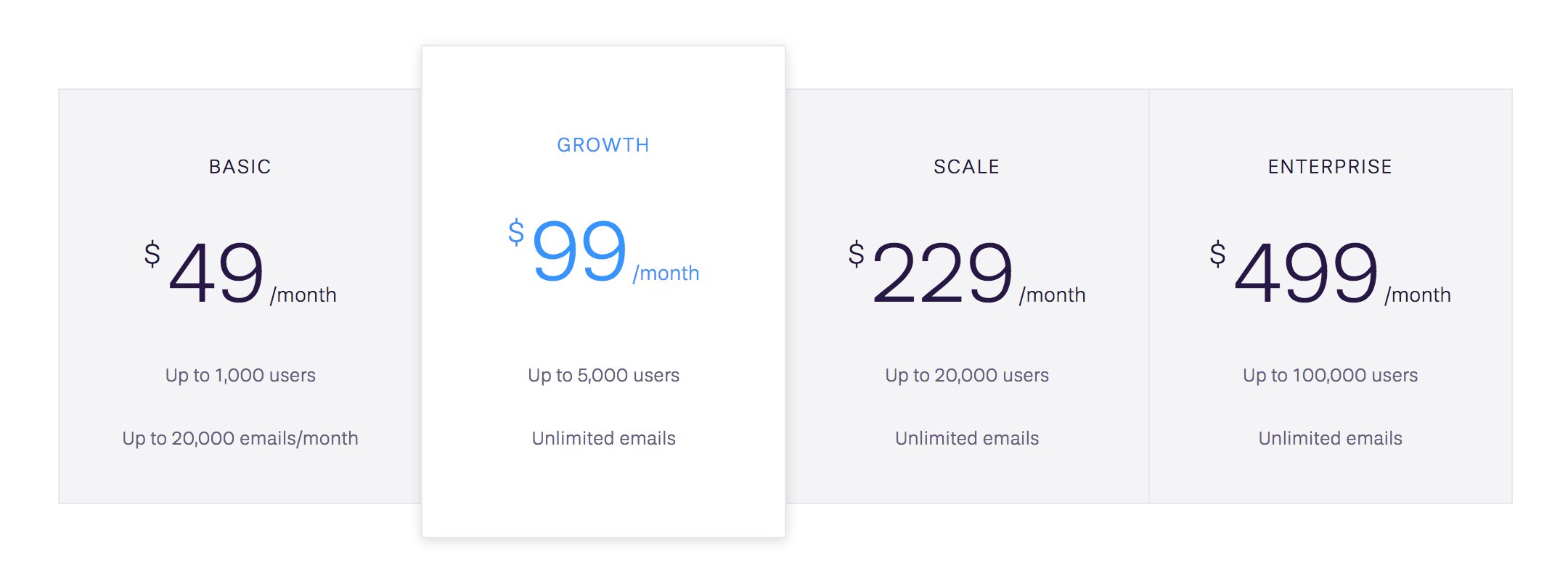It’s Jane on the line today — with some thoughts on our pricing decisions. We received a great question last week, and the answer could be interesting to you, as well. Here’s the question, asked by a fellow SaaS founder:
“I’m wondering how you determined your pricing? You guys seem more expensive than folks like Drip and don’t offer a free trial. How did you rationalize this?”
Before I go into details, here’s a snapshot of our current monthly pricing grid for your reference:

To address the free trial concern first, we’ll be absolutely offering a 14-day free trial (card upfront though) when we launch publicly. Sidenote: here’s a nice article by the Nusii founders explaining why it creates a better experience for everyone to ask for a credit card upfront.
As for the main concern — the pricing tiers… It’s interesting to see how different people perceive our pricing, especially compared to Drip! Surprisingly, we’re not even building something that competes directly with Drip; rather, Drip is just the most popular workaround among fellow founders. And the feedback is that founders aren’t happy with how complex things are there. Drip was primarily built for marketing (acquiring users), not for lifecycle emails (engaging users). Their latest switch to ecommerce shows just that.
Our real functional competitors are Intercom Engage (now called Messages), Customer.io, Vero, etc. These solutions target larger clients, and most of them are way more expensive in terms of the first plan — their pricing grid typically starts at $100–150/month.
So our own goal from day one was to be affordable for early-stage founders! When I recruited Claire and Benedikt with a product idea last September, the key part was being “more lightweight, simple, and affordable” than these competitors (largely influenced by my own previous experience as a solo SaaS founder). Our first tier is $49/month which is perfectly affordable, especially if you compare that to a do-it-yourself solution (costs $0, but eats up days or weeks of work).
Then the logical question is, why don’t we offer a free plan? The thing is, being affordable is entirely different from being free. This is a business decision we’re pretty solid about. We’d love to keep developing the product, and that won’t be possible if our users aren’t paying us. Here’s an interesting conversation I had with Bridget Harris at UI Breakfast Podcast about making freemium work. Also, here’s a famous case study from Baremetrics on how freemium nearly killed their business.
Similar to Baremetrics, Userlist is heavy on the data side, so offering a free plan could be similarly destructive for us. Plus at this stage, we want to provide as much hand-holding during the setup as possible, and it wouldn’t be viable for a high volume of free users.
Hope all of the above helps you understand our thinking better, and maybe inspire pricing decisions for your own product. For further reading, I highly recommend following Patrick Campbell of Price Intelligently (there are also plenty of podcast interviews and talks with him available online).
— Regards, Jane.
Don’t wait for the muse. Apply this step-by-step method to write high-performing email campaigns in hours, not weeks.
